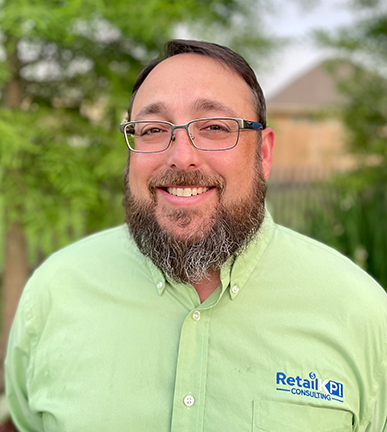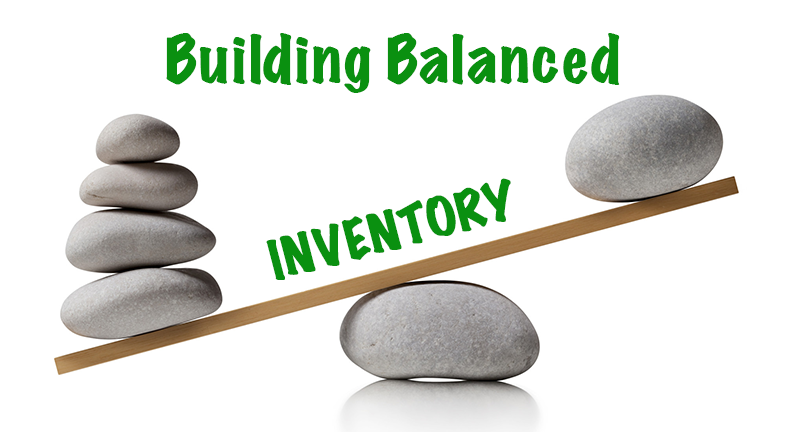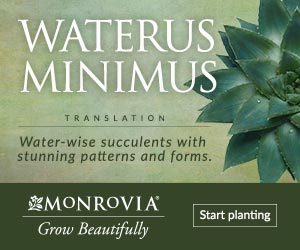Building Balanced Inventory
by Tim Quebedeaux
[The following is a message Tim Quebedeaux created and originally shared through Garden Center Magazine as part of their State of the Industry Report.]
Profit dies as non-perishable inventory ages...
but there are ways to keep it from lingering on the shelves.
Late February for me used to be time to get the Garden Center ready for Spring, but now my time is spent in a different way. I spend it analyzing why Garden Centers were and were not profitable for the previous year. As one of the service providers for The Garden Center Group, I compile and analyze The Annual Profit & Loss Study. The reports are turned in to me by mid-February, and by early March, I reveal what really happened in the previous year. This groundbreaking study is only made possible by aligning the Chart of Accounts (COA) of the reporting Independent Garden Centers. This standardized COA has made it possible for The Garden Center Group’s clients to compare P&L statements down to the category and account level. Besides the usual metrics in a P&L statement, we also track inventory control Key Performance Indicators, such as Inventory Turns and Gross Margin Return on Inventory Investment (GMROII). By doing this, we can track profitability down to the category level.
The past few years have definitely been a roller coaster as it pertains to revenue and profit. But as I dug deeper into the numbers this summer in preparation for The Garden Center Group’s Fall Event 2023 in Cincinnati, I saw some of the same patterns. We are good at retailing perishable products, and always need more work with non-perishables.
One Key Performance Indicator (KPI) that I focus on is GMROII (Gross Margin Return on Inventory Investment). This KPI is your attained margin dollars divided by your average inventory over a 12-month time frame. I like to think of this simply as how many margin dollars did you get back for what you presented to your customers. Your average inventory being represented as your inventory offerings. In my GMROII analysis for the 2022 P&L Study, I found two things that intrigued me. The first seems obvious, but still is a truth. The Best of the Best Group of Garden Centers (the top 10 in profitability out of 82 centers reporting) separated themselves by not only selling more perishables as a percent of revenues (76% vs 66%) they also had 64% of their perishable categories above GRMOII goal ($7.00) vs only 40% for the rest of the group. To sell more and generate more margin dollars per inventory dollar invested, that is a winning combination as we saw with their profitability of 18.5% vs the total Group landing at 10.4%. The second result that intrigued me, is that EVERYONE had at least half of their non-perishable categories not making money at less than a $2.00 GMROII.
When working with my clients I always have a two-sided approach to attaining more profitability… 1) Get better at the categories that are profitable. 2) Take action on those that are not. Diving into what the Best of the Best group did better, I saw these categories rise above the rest of the group in GMROII: Annuals, live Christmas, Shrubs, Trees, and Tropical Plants, with a much higher GMROII in Shrubs and Tropical Plants. These are areas where Garden Center Owners and Buyers should perform better, as these are typical categories that define us as Garden Centers.
As we consider the non-perishable categories, we often see these categories as supporting our perishable categories. As the supporting cast, we need to make sure they are at least profitable if not to goal. The non-perishable categories that are not profitable for The Group are Casual Furniture, Artificial Trees, Giftware, Outdoor Living, Pet, and Pottery. The categories that are above goal for both the Best of the Best and the rest of The Group are Bulbs & Seeds, Hardgoods, and Landscape Non-Plant.
Let’s dive deeper into the categories that are working and see if we can learn any lessons from those categories. Bulbs & Seed and Landscape Non-plant are both categories that have some innate seasonality and one might say perishability. So, I can see them turning faster than let’s say Hardgoods. But wait a minute, Hardgoods is a profitable category for The Group! Well, at $2.07 for the rest of The Group and $2.97 for the Best of the Best, it is barely making it, but… It is! Lots of work from this group to pay attention to this category over the years, listening to Steve Bailey and myself about inventory control and turns!
Now let’s look at the other side of the coin: Casual Furniture, Artificial Trees, Giftware, Outdoor Living, Pet, and Pottery. Why are these categories not profitable? Because Garden Centers carry more inventory than what is needed to satisfy the revenue demand during the season. Leading to fewer turns and an added cost that can be hidden to Owners and Buyers: Carrying Cost of Inventory. From the cost of borrowing money, loss of opportunity of profit, facility and wage & wage benefits costs, and the scale of total amount of old inventory, after a year you can add on 30% to the initial cost of the items.
Often non-perishable product is seen as not costing anything to have sitting longer, thus the tendency is to not push it out the door, to allow for higher inventory than is needed. That is the problem! But how do you fix it? A simple one-two punch, get it out and then make sure it doesn’t come back… What is it? Bad Inventory!
First step, get it out!
This is where you lean on your POS system data to point the way. Aging inventory reports show which items have been in stock over a period of time. I tell The Group’s Garden Centers, “No Birthdays.” Inventory items should not celebrate a year in your store, as that is when the carrying cost of inventory starts to add up. Identify those items and take action. What action? Re-merchandise, discount, donate, and if needed dispose of. Each one of those actions are dependent on what time of year it is, more specifically, what your customer traffic dictates. If you still have adequate customer traffic, you can discount and re-merchandise and expect good movement on older inventory. When your customer traffic slows down, it is time to donate or shrink out.
The next part can be more difficult - not allowing more in.
How to know how much is enough. That is the hard part, but I can help. As buyers, there is a certain amount of power we enjoy, especially when it is not our money! Having said that, most inventory issues begin with buying issues. Stepping back and looking at why perishable products are so profitable – they have a forced efficiency that generates higher turns, thus higher GMROII’s. Simply saying, if you don’t sell a 4” Annual/Perennial/ Herb/Veggie within a few weeks, the value decreases and you will be FORCED to take action. This does not occur with non-perishable products. If we treated all categories like a 4” Annual, what would that look like? As a buyer, buying in product like gifts or pottery would be different. Those items cannot make it all summer, so the gifts you bought for spring, will decrease in value by the fall and will be unsellable. That is how you need to think – buy in product for one season, sell it during that season, and get rid of it somehow by the end of that season: SEASONALITY.
To control your buying at the category level, you need to determine the following:
- WHEN you plan to sell the product – identify the season.
- WHAT is your revenue goal for that season?
- WHAT is the attained margin?
- HOW much ammo do you currently have – Inventory value at cost on hand?
- HOW much ammo is coming in – what orders are pending?
With all that information you can calculate how much inventory at cost you still need to purchase to attain that revenue goal at that attained margin for that season. This is the science behind buying that will restrict the artist who tends to buy too much. The art behind the buying is to know what to buy, not how much. Give your artist limits and let them paint your garden center with exciting inventory that will inspire your customers to come back again and again!
Profitability on non-perishables has always been a struggle for a business model that depends on the forced efficiency of the majority of their revenues to make a profit. Looking harder at inventory control KPI’s down to the category level still shows us we have room to grow, but it takes the commitment to be able to measure those KPI’s. It takes the commitment to plan to change behaviors and processes that have been entrenched for decades in some cases. It takes the commitment to want to be more profitable and build wealth on the bottom line. Retailing is not an easy business, and as Independent Garden Centers, we struggle running our business, as such. It is time we all take on the challenge of being the best business owners we can be… After the pandemic, we should realize our product is not only wanted but needed.


Got questions or need more information about The Group's the Annual P&L Study or the Weekly Department Review (WDR)? Give Tim a call or email.
Tim Quebedeaux
Cell: 770.355.6249
Email: CLICK HERE
Tim Quebedeaux, RetailKPI Consulting, is a service provider for The Garden Center Group and manages all Group financial sharing programs. The Weekly Department Review (WDR) and The Annual P&L Study are industry exclusives developed by The Garden Center Group and are included in your retainer!
REMEMBER: Your interaction (by phone and email) with Group Service Providers such as Tim Quebedeaux, Sid Raisch, Jean Seawright, John Kennedy, and of course Danny Summers are included in your retainer! So what are you waiting for? Take advantage of all that The Group has to offer and give them a call or send an email now!


